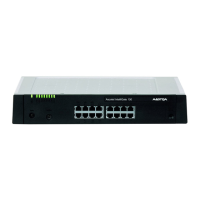System Functions and Features as of I7.9
Numbering Plan 23
syd-0200/3.0 – I7.9 – 11.2009
Stored Numbers
If an external number is stored, the exchange access prefix must also be entered at
the same time. Prefix and number must be separated with a hyphen. The hyphen
ensures that when the number is dialled via a line key, the exchange access prefix is
truncated.
Only the front portion of a number can be entered at any time. The rear portion
must then be suffix-dialled manually. Example:
The number 0-001212 and the name "NY" (for New York) are stored under the ab-
breviated dialling number 7500. Any user who wants to call Manhattan, New York,
simply dials "NY" by name, then adds the local number.
Ascotel® IntelliGate® Net:
In an AIN with nodes in different countries the abbreviated dialling num-
bers must always include the international prefix (e.g. 00) and the country
code (e.g. 41). (Example:
0-0041326553333). This is necessary as the national portion of the
number may well be identical in different countries. This prevents con-
flicts in the call routing and call number display (CLIP).
Name
The name is used:
• To dial by entering the name rather than the call number (dialling by name).
• To display the name on the user’s own system terminal when the CLIP number of
an incoming call matches the number stored under the abbreviated dialling (see
"Replicating the Name Display in the PBX", page 43).
Digit Barrings and Exchange Access Rights
When an external destination is dialled via an abbreviated dialling number the
number stored bypasses the digit barring and the exchange access authorization.
When an external destination is dialled using dialling by name via abbreviated dial-
ling, only the exchange access rights are bypassed (more on digit barrings and ex-
change access rights see"Digit Barring Facilities", page 164 and "Exchange access
authorization", page 175).

